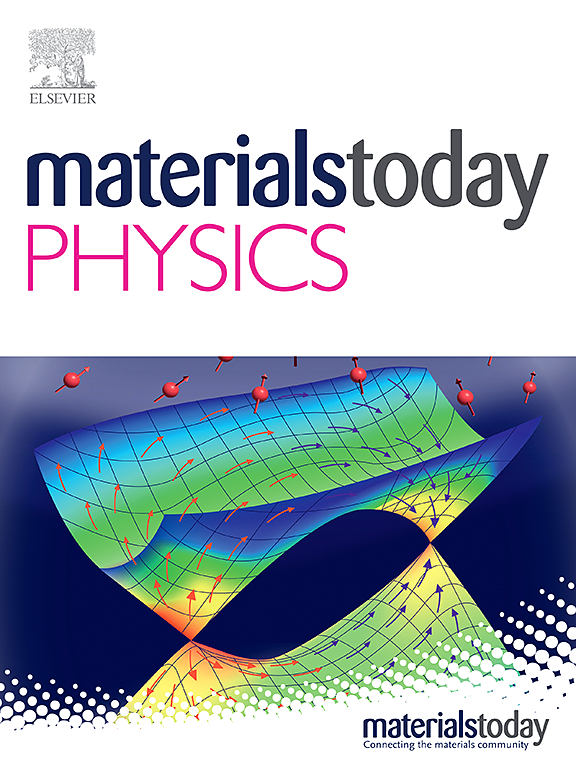Searching for topological carbon allotropes and the possible nontrivial quasi-particle states in them
IF 9.7
2区 材料科学
Q1 MATERIALS SCIENCE, MULTIDISCIPLINARY
引用次数: 0
Abstract
Carbon, as one of the most abundant elements on earth, possesses numerous allotropes that display a diverse range of physical properties. In this study, we utilized ab initio calculations and symmetry analyses to investigate 703 carbon allotropes, leading to the discovery of 315 (32) topological phononic (electronic) materials with ideal nontrivial characteristics. The topological phonons encompass single, charge-two, three, and four Weyl phonons, as well as Dirac (Weyl) node-lines phonons. Topological electronic states include topological insulators, Dirac points (Type-II), triple nodal points, and more. To verify this significant discovery, we adopt several real carbon allotropes with () structure within space group (SG) No 178 (230) to showcase their topological characteristics. The structure exhibits a combination of single-pair Weyl phonons and one-nodal surface phonons, resulting in a single surface arc in the (100) surface Brillouin zone (BZ) and isolated double-helix surface states in the (110) surface BZ. In the topological semimetal , perfect triple degenerate nodal points near the Fermi level are found, resulting in distinct surface states in the (001) and (110) surfaces BZ. This research not only significantly broadens our understanding of topological quasi-particle states in carbon allotropes, but also offer a valuable material platform for further exploration of topological electrons and phonons in light element materials.


寻找拓扑碳同素异形体及其可能的非平凡准粒子态
碳作为地球上最丰富的元素之一,具有许多同素异形体,表现出各种各样的物理性质。在这项研究中,我们利用从头计算和对称性分析研究了703种碳同素异形体,从而发现了315(32)种具有理想非平凡特性的拓扑声子(电子)材料。拓扑声子包括单,电荷二,三,和四个Weyl声子,以及狄拉克(Weyl)节点线声子。拓扑电子态包括拓扑绝缘体、狄拉克点(ii型)、三重节点等。为了验证这一重大发现,我们在空间群(SG) No . 178(230)中采用了几个具有单一性(pbgpbg)结构的真实碳同素异形体来展示它们的拓扑特征。单一性结构表现为单对Weyl声子和单节点表面声子的组合,导致(100)表面布里渊区(BZ)的单表面弧和(110)表面BZ的孤立双螺旋表面态。在拓扑半金属pbgpbg中,在费米能级附近发现了完美的三重简并节点,使得(001)和(110)表面BZ具有不同的表面态。本研究不仅大大拓宽了我们对碳同素异形体拓扑准粒子态的认识,而且为进一步探索轻元素材料中的拓扑电子和声子提供了有价值的材料平台。
本文章由计算机程序翻译,如有差异,请以英文原文为准。
求助全文
约1分钟内获得全文
求助全文
来源期刊

Materials Today Physics
Materials Science-General Materials Science
CiteScore
14.00
自引率
7.80%
发文量
284
审稿时长
15 days
期刊介绍:
Materials Today Physics is a multi-disciplinary journal focused on the physics of materials, encompassing both the physical properties and materials synthesis. Operating at the interface of physics and materials science, this journal covers one of the largest and most dynamic fields within physical science. The forefront research in materials physics is driving advancements in new materials, uncovering new physics, and fostering novel applications at an unprecedented pace.
 求助内容:
求助内容: 应助结果提醒方式:
应助结果提醒方式:


